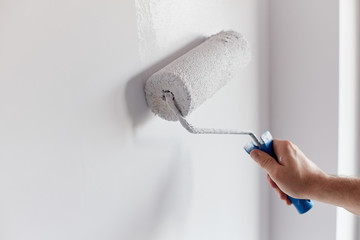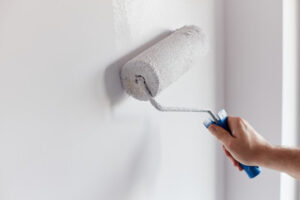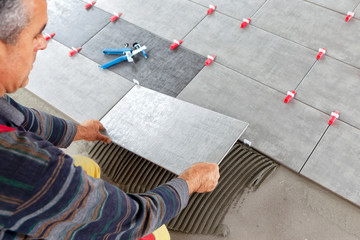Best Self Improvement Podcasts For Young Adults are a great way to learn new skills and stay motivated. You can listen to these podcasts during chores or a long commute.
This podcast features interviews with experts like psychologists, financial planners, and fitness trainers. The episodes are short and cover a wide range of topics.
The School of Greatness features inspiring interviews with today’s most influential minds and leaders. From health and money to relationships and self-help, NYT bestselling author Lewis Howes elicits engaging and actionable steps from his guests to teach listeners new skills and inspire them with incredible stories of everyday success.
Lewis is a successful entrepreneur, 2x All-American athlete and keynote speaker who created the podcast and academy of the same name with the goal of helping people reach their full potential. His guests range from Olympic gold medalist Shawn Johnson to Pencils of Promise CEO Adam Braun. The interviews are casual and often feel like conversations among friends. This makes it easy to connect with the guests and their message.
Whether you’re looking to improve your business or just want to be more successful in life, The School of Greatness is a great place to start. It provides all the tools, knowledge and actionable resources of the book in a concise format that is easy to digest. It will help you to create a happier, more fulfilling and meaningful life. It will also show you how to overcome adversity and find your passion. You’ll learn how to create a life that gets you excited about jumping out of bed each morning. The School of Greatness is a must-listen for anyone who wants to be their best.
We Can Do Hard Things
As the name suggests, this podcast is devoted to empowering listeners to tackle hard things. Glennon Doyle, a bestselling author and memoirist, hosts the show with her sister Amanda Flaherty Doyle (aka “Sister”) and her wife Abby Wambach. Their yin-and-yang banter and distinct life perspectives lend a depth to each episode that is hard to beat.
The trio discusses their own hard things, including the challenges of parenting and their ongoing struggles with eating disorders. They also invite their pod squad to call in with voicemail confessions and laugh-out-loud stories that have helped them overcome hard things. In addition to the hard stuff, the show features episodes that explore the hosts’ relationship, which provides a refreshing look at the complex facets of a committed partnership.
Each episode ends with the “next right thing,” a takeaway that helps listeners tackle life’s hardest challenges. Previous guests have included Vice President Kamala Harris, former First Lady Michelle Obama, Tracee Ellis Ross, Oprah Winfrey, Jane Fonda, Tarana Burke, Gloria Steinem, Dr. Brene Brown, Sonya Renee Taylor, Suzanne Stabile, Ocean Vuong, and more. In fact, the show’s popularity has led to a multiyear extension with its parent company, Audacy.
The Tim Ferriss Show
The Tim Ferris Show podcast dives deep into the minds of world-class performers, from successful entrepreneurs to renowned athletes and artists. Host Tim Ferriss interviews each guest and deconstructs their tools, tactics, and habits to find out what really works. Each episode offers valuable insights and practices for personal and professional growth.
Tim Ferriss is a self-experimenter, entrepreneur, and author of several bestsellers including The 4-Hour Workweek, The 4-Hour Body, and Tools of Titans. He is also a popular speaker who has addressed the likes of Google, Nike, and the Central Intelligence Agency. He is renowned for his ability to master the art of productivity and work-life balance. Newsweek once referred to him as “the world’s best human guinea pig,” which he takes as a compliment.
The Tim Ferriss Show is not only entertaining and informative, but it can also help you reach your goals faster by offering a wide variety of guest experts. For example, he recently spoke with Dr. Michael Gervais, one of the world’s leading high-performance psychologists, about how to extinguish phobias and rein in anxiety. He also interviewed renowned actor Hugh Jackman about his meditation practice and how he maintains energy for his live performances. You can also learn about new innovations in finance with the show’s interview with bestselling financial writer Morgan Housel. Tim also shares his favorite websites and gives tips on how to save money.
Rich Roll
Rich Roll is a world-renowned vegan ultra-endurance athlete, wellness advocate, best-selling author, husband, and father of four. His story is a fascinating tale of recovery and transformation, with his personal journey serving as an inspiring model for healthy living.
In his podcast, Roll interviews a diverse range of guests on wellness, veganism, fitness, and spirituality. He delves deep into these subjects with forward-thinking individuals, whose perspectives challenge the status quo and inspire listeners to transform their lives.
Featured interviews discuss topics such as entrepreneurship and creativity, self-improvement, and resilience. The show also explores spiritual practices and philosophies, as well as the role of social justice in achieving positive change. Moreover, the show often addresses broader issues such as environmental degradation and global poverty.
The episode features author Chris Hauth, who Roll credits with changing the course of his life. Hauth’s training method, which involves high volume at low intensity, complemented Roll’s PlantPower diet, which the athlete credits with helping him to achieve his remarkable two-step midlife turnaround from alcoholic Stanford swimmer to ultradistance triathlete and marathon runner. When Roll implemented Hauth’s approach, he found that his diet was not as restrictive as he previously thought, but that it was actually more sustainable. He explains how, by promising to stick with his new diet for 30 days, he was able to build a new habit and stop relying on willpower.
The Chris Duffy Show
Featuring research and interviews with neuroscientists, couples counselors, psychologists, and a year’s worth of interview footage of real relationships, comedian Chris Duffy takes you on a journey to understand how love works. The show is part documentary, part guided conversation and is the first show produced by WBUR iLab.
In each episode, a TEDTalk speaker shares their sharp insights and clear takeaways on how to be a better human. From work to home and head to heart, the show covers a variety of topics to help you improve and show up for yourself.
Chris is a NYC-based comedian who performs across the country. He has written for television shows on HBO and National Geographic, and his writing has appeared in the Boston Globe, Makeshift Magazine, and Wag’s Revue. He is also the creator and host of You’re the Expert, a live show and podcast where three comedians try to guess what scientists study all day, which was produced in partnership with LabX at the National Academy of Sciences.
During each episode, Duffy’s guests endorse things they love. These items—from candy bars to kitchen appliances, nose flutes to gaff tape—are then given away to audience members at Caveat. The show is like if Oprah’s Favorite Things were hosted by comedians and science lovers. It’s weird and it’s fun, and you should check it out. The show is available on iTunes.
Pulling the Thread with Elise Loehnen
Pulling the Thread is a weekly podcast hosted by Elise Loehnen, whose interviews with cultural luminaries explore many of life’s big questions. She also features conversations with experts in various fields to help listeners become more aware of their own beliefs and behaviors.
Gretchen Rubin, author of The Happiness Project and Better Than Before, brings her practical advice about happiness and good habits to this popular podcast. The show is part of the Cadence13 network. The show covers a wide range of topics, from personal growth to improving your health.
If you enjoy this podcast, try listening to other shows by the same host or producer. You can use the Rephonic app to find similar podcasts using its 3D interactive graph. It uses the data displayed in the “Listeners Also Subscribed To” section of Apple Podcasts to identify related shows.
Johnny and AJ, founders of The Art of Charm, share their coaching experience with listeners on their podcast. The duo is dedicated to helping their audience cultivate a positive mindset and achieve success in all areas of their lives. Their podcast offers daily guidance on achieving mindfulness and a healthy lifestyle. They discuss how to master human dynamics and relationships, build confidence and self-esteem, and be their best selves.






 Laying The Tiles
Laying The Tiles